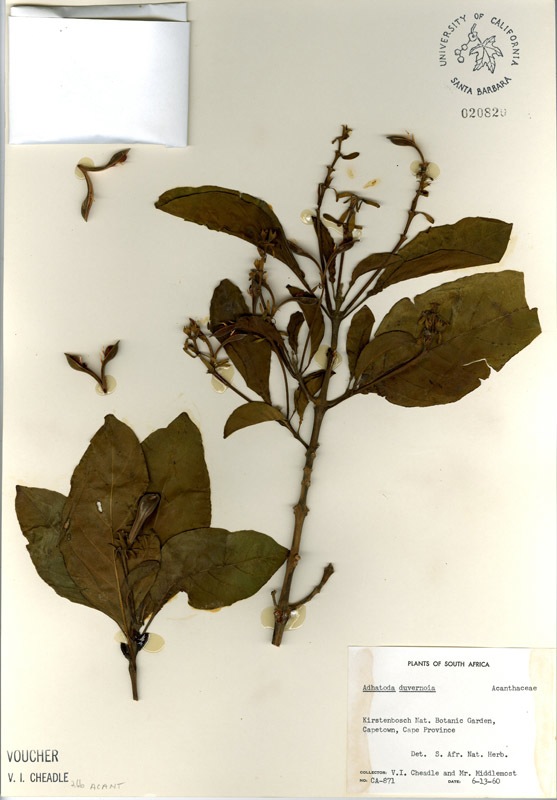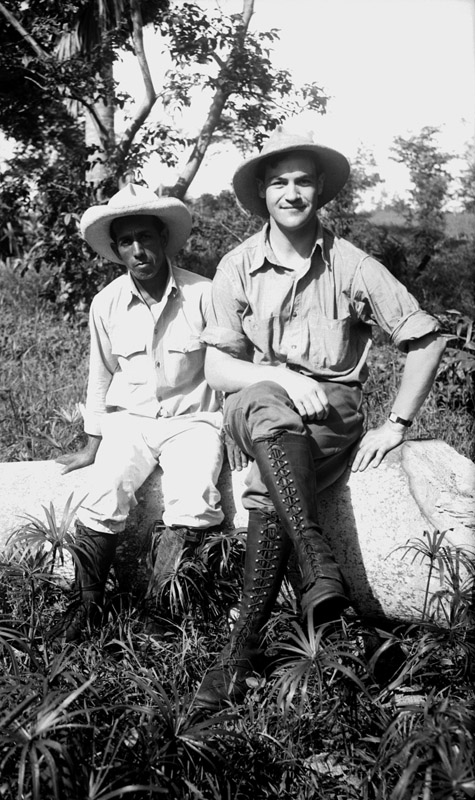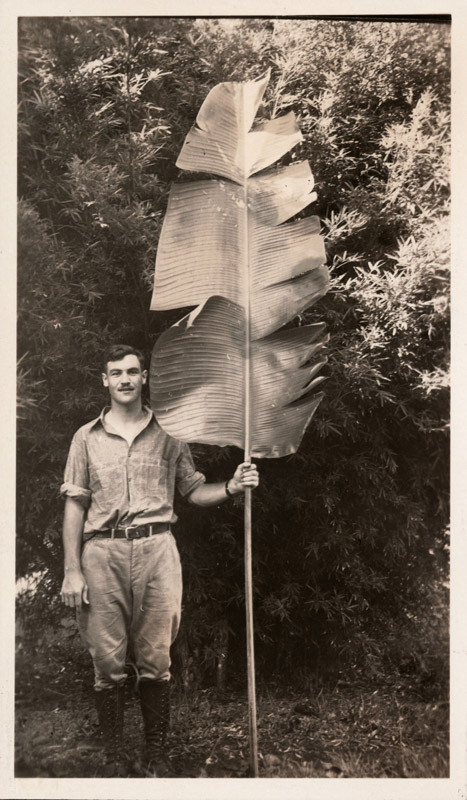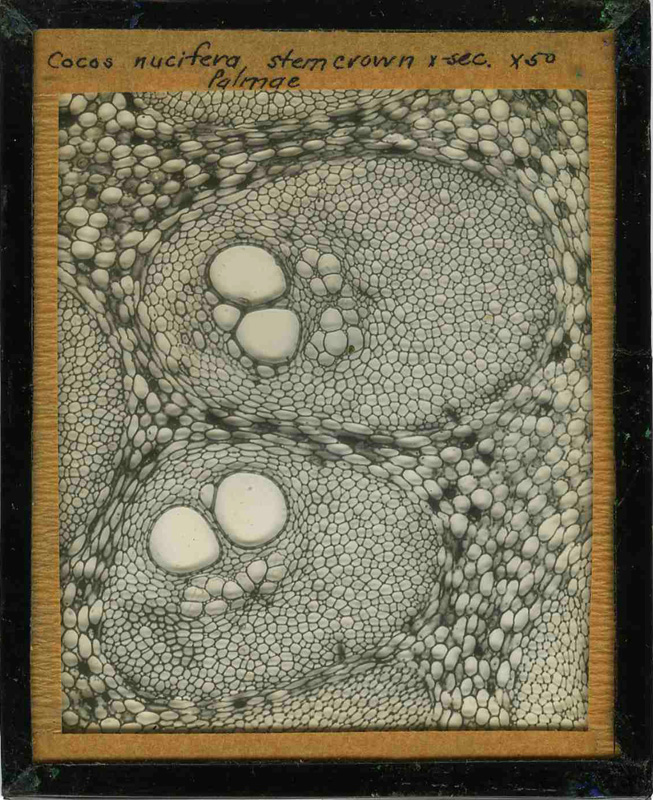Growing a Legacy
If there were a chancellor’s hall of fame, Vernon Cheadle would hold a prominent place. As UC Santa Barbara’s leader in the 1960s and ’70s, he guided the campus through an extraordinary expansion, paving the way for the onetime teacher’s college and then-new addition to the UC system to become the true research university that it is today.
For the vital role Cheadle played in that evolution — and for the administrative superstar status he achieved, UCSB’s central administration building, Cheadle Hall, serves as a bricks-and-mortar homage. Yet it’s a lesser-known campus facility that his family says reflects his true professional passion: the Vernon and Mary Cheadle Center for Biodiversity and Ecological Restoration (CCBER).
Vernon Cheadle was a world-renowned botanist whose prolific research bookended — by decades in either direction — his time as UCSB’s top administrator. His vast collections, which include some 15,000 plants and 60,000 light microscope slides, are housed at the research and teaching center named for both him and his wife. Mary Cheadle was actively involved in campus activities during her husband’s tenure as chancellor and later as benefactor to the library and trustee of the UC Santa Barbara Foundation; together the couple were “truly a wonderful pair,” said son William “Bill” Cheadle, M.D.
“A lot of people know what he did for the campus as chief administrator but a lot of people don’t know Cheadle the botanist,” Bill Cheadle said of his father, who died in 1995. “He was a botanist for 30 years before he ever became chancellor, and he went back to it for almost 20 more years after retiring. In a way he had two different lives — one as a scientist and one as an administrator. Cheadle Hall may highlight his administrative work, but CCBER symbolizes his life’s work and his love of botany. And that’s the great thing about it.”
Seeking to safeguard his father’s scientific legacy by ensuring that CCBER survives and thrives long-term, Bill Cheadle, with his wife, Mary, has gifted the center with $1.6 million — most of which will establish an endowment meant to support its operations in perpetuity.
“We are deeply grateful to Bill and Mary Cheadle for their personal and generous philanthropy to establish an endowment to support the operational priorities of CCBER, including the valuable and historically significant natural history collections, as well as the center’s ecological and restoration efforts,” said Chancellor Henry T. Yang. “This gift is a meaningful tribute to the memory of Bill’s parents, Mary and Vernon Cheadle, and helps to build on Vernon’s legacy as a renowned botanist as well as his extraordinary leadership as our campus’s chancellor from 1962 to 1977. As the second chancellor of our UC Santa Barbara campus, Vernon developed a small, mostly undergraduate college into a strong, full member of the UC system. By the time Dr. Cheadle retired in 1977, the campus had experienced a period of solid foundation building — in academic programs, buildings and faculty scholarship.
“He also guided the campus plantings to include an incredibly diverse and unusual array of species from all over the world,” Chancellor Yang added of Vernon Cheadle. “He had a vision of developing the campus into an outdoor classroom. This would not only serve as an educational tool, but would also create an environment of great beauty. Upon retirement, Dr. Cheadle returned to the laboratory full-time, and resumed his life-long love of research. Vernon had a tremendous scientific curiosity. For his research and studies, he actively used the Museum of Systematics and Ecology — now known as the Center for Biodiversity and Ecological Restoration. We join Bill and Mary in looking forward to the continuing success of CCBER and our faculty, staff and students in biodiversity and restoration activities and research.”
In line with UCSB’s own three-pronged mission of research, teaching and public service, CCBER, which launched in 2005, is equal parts scientific study hub, natural history museum and ecosystem management service. It boasts multiple collections of plants, animals, algae and diatoms — many of which have now been digitized — that serve as a means of studying species distribution, climate, medicine, disease, natural resources and life itself. Its educational programs include “Kids in Nature,” which engages area schoolchildren in grades K-12. Aiming to protect and enhance native plant resources, promote regional biodiversity and preserve ecological function in urbanized areas, CCBER is leading several ecological efforts on and around campus. To that end, the center is playing a key role in the restoration of wetland habitat at the former Ocean Meadows Golf Course (now known as North Campus Open Space).
All of which makes CCBER the ideal home for the impressive and important plant collections of Vernon Cheadle. The Harvard-educated botanist traveled around the world collecting samples and, son Bill said, was actively devoted to their study until his death at age 85. His father’s lifelong ardor for research is what motivated his own family’s support of the center.
“We just want to make it permanent,” Bill Cheadle said of CCBER, where he and wife Mary are longtime benefactors (they have also, in the past, made gifts to UCSB’s library and the campus’s soccer program). “I don’t want it to ever go away. We want to keep Dad’s legacy alive and keep people informed about what he was really like. He was just an amazing human being. I still think about what he would do when I’m in a difficult situation.”
Jennifer Thorsch echoed those same sentiments. The Katherine Esau Director of CCBER, she was a graduate student when she first met and worked beside Cheadle. After earning her Ph.D., she spent 15 years as his lab director — an experience she calls “a privilege.” Thorsch said the center she now runs “embodies the vision for success that Vernon Cheadle instilled in me.”
“CCBER is a biodiversity hot spot that provides students of all ages the opportunity to explore, learn and be inspired by the environment and the plants and animals that inhabit our campus and local region,” Thorsch said. “Our collections offer a valuable window into the past and will inspire and enable future research projects that we cannot yet imagine. When fully funded, the endowment created by the Cheadles’ gift will help us to protect and preserve UCSB’s unique biodiversity — and to continue to provide opportunities for research and education for current and future generations.”
Added Michael Witherell, UCSB’s vice chancellor for research, “We are delighted that Bill and Mary Cheadle have made this generous donation, which insures that the Cheadle Center will continue to thrive for a very long time. The center helps the university do a better job of teaching and research about biodiversity, and it helps connect students in the surrounding community with natural history and ecology.”
There is one particular student whose interest in CCBER runs deeper than most. Joseph Cheadle, son of Bill and Mary, grandson of Vernon and Mary, is in his third year at UCSB. Majoring in economics and math, he hasn’t had occasion to tap the center in his course of study, but he has been there to conduct research on one special subject — his grandfather.
“Growing up I heard stories about my grandfather, but he died when I was 2 so I didn’t know him at all,” Joseph Cheadle said. “Visiting CCBER, there is a lot of information about his life in there. Seeing that — seeing all his slides — I learned so much about him. I appreciate what he’s done now more than I ever knew. Just imagining this place, the whole campus, how it used to be, shows me how hard he worked to accomplish his goals. That’s inspiring for me.”
Such words are music to the proud ears of Bill and Mary Cheadle, who never pushed their younger son (elder Jack is in medical school) to attend UCSB — but are thrilled that’s where he ended up.
“When he said he wanted to come here — for him to choose UCSB of his own volition — it was just so exciting and fulfilling to me. It’s just fabulous to have him here,” said Bill Cheadle, who raised his sons in Kentucky, where he is a professor and program director in the Department of Surgery at the University of Louisville. “It gives me an even better excuse to get out here more often; it’s thrilling to see the growth of this most beautiful campus.”
“When I was living here, probably 90 percent of what you see today was not here,” said Cheadle — possibly the only person who can claim UCSB itself as his childhood address (he grew up in University House on the campus’ southern edge). “It’s exciting to see the growth and to see so many good students come here. Quality! That’s what Dad wanted — to raise the bar and turns this campus into a real research university. There were home economics and woodshop classes when he took over. Now it’s a world-class research university and he lived to see its admission to the Association of American Universities. It’s incredible.”









